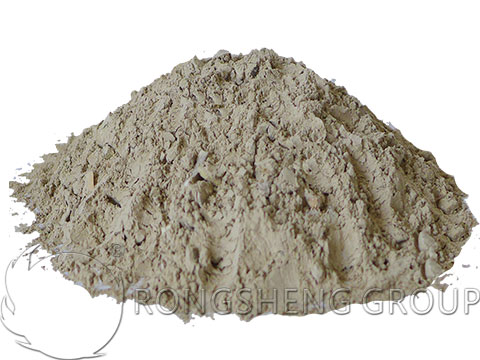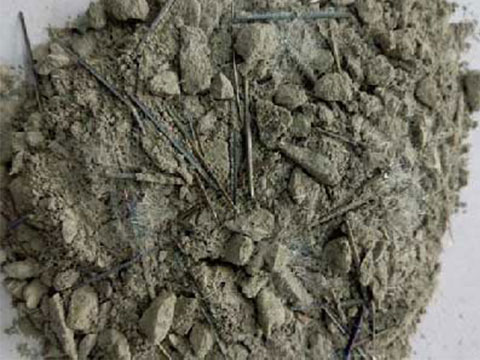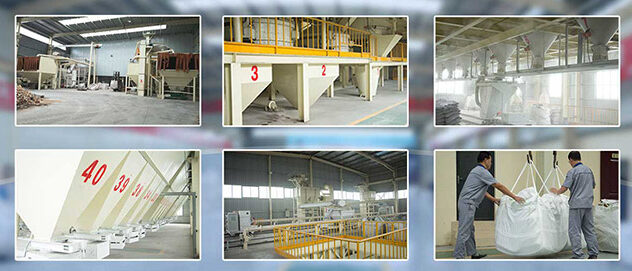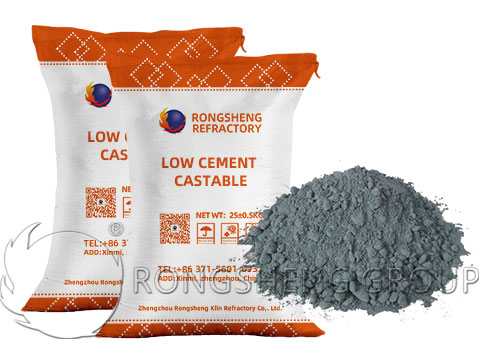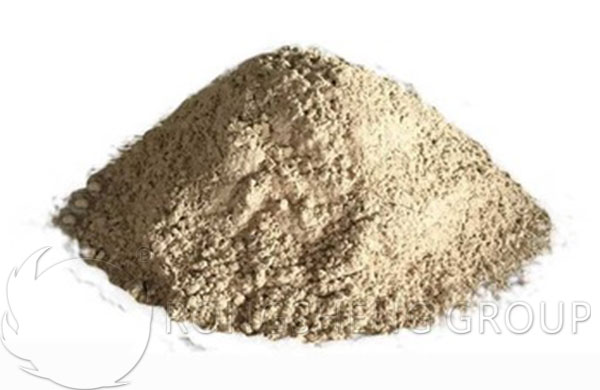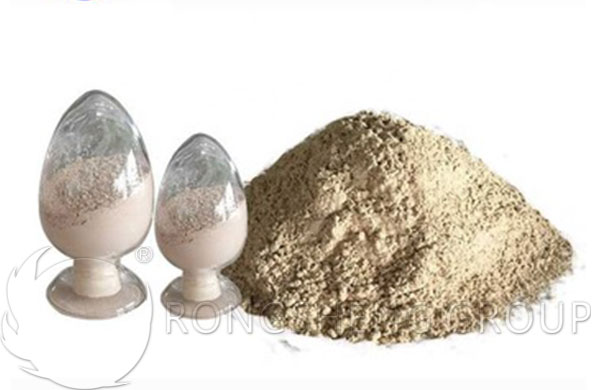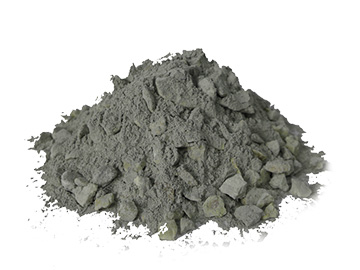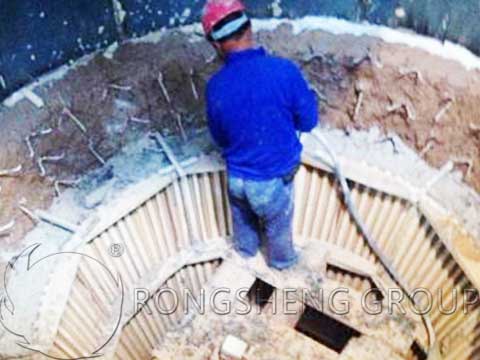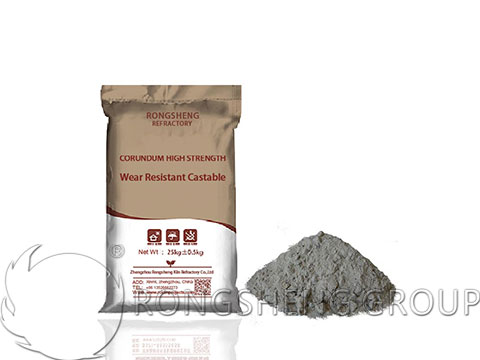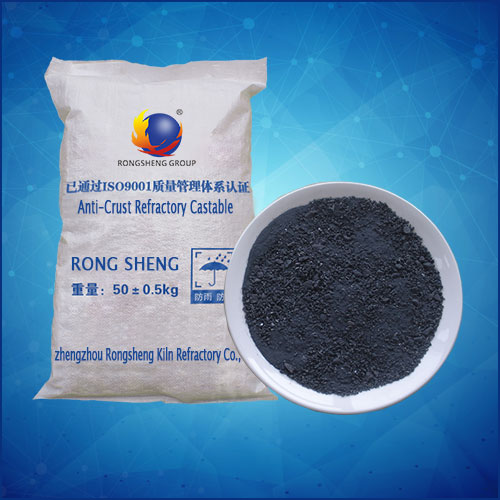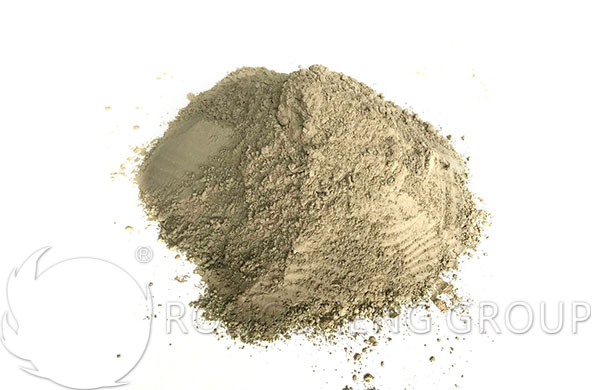Corrosion-resistant refractory castables are composite monolithic refractory materials made primarily from high-alumina raw materials, combined with clay, siliceous, or alkaline auxiliary materials in a scientifically formulated process. Their production utilizes a micronized powder technology enhancement system. By adding activated alumina micropowder (particle size ≤1μm) and silica micropowder (particle size 0.1-0.5μm), along with organic/inorganic composite binders (such as aluminate cement and phosphate), and precisely controlling the amount of water added (typically 5-8%), they achieve high densification. After sintering at 1500-1650°C, the apparent porosity can be reduced to 12-15%, and the bulk density reaches 2.8-3.2g/cm³, creating a dense, impermeable structure.
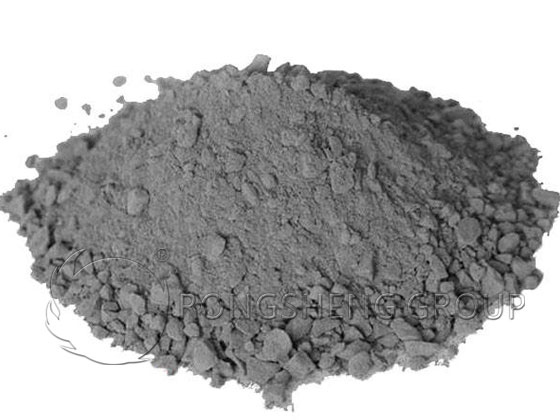
Application Methods and Performance Advantages of Corrosion-Resistant Refractory Castables
This material exhibits excellent thixotropic flowability (flow value ≥ 180mm) and supports three application techniques:
- Vibration Casting: Suitable for conventional structures, with a vibration time of 2-3 minutes.
- Self-Leveling: Relying on the material’s own weight to achieve fill, it is particularly suitable for:
-
- – Complex structural areas (corners with a radius of ≤ 50mm)
- – Areas with dense anchorage (spacing ≤ 150mm)
- – Thin-walled linings (30-100mm thick)
- Prefabricated Installation: Special-shaped components can be prefabricated (with a dimensional accuracy of ±1.5mm), shortening on-site construction time by 70% compared to traditional refractory materials. Construction noise levels are reduced by 15dB(A), labor intensity is reduced by 40%, and construction efficiency is increased by 3-5 times. Testing has shown that the material’s flexural strength reaches 6-10MPa at room temperature and maintains 4-6MPa at high temperatures (1400°C).
Key Technical Specifications of Erosion-Resistant Refractory Castables
- Impermeability: Tested using ASTM C863, slag penetration depth ≤ 5mm (1400°C x 24h).
- Thermal Shock Stability: Strength retention >80% after ≥25 cycles of 1100°C-water cooling.
- Corrosion Resistance: In acidic media with a pH of 2 or alkaline media with a pH of 12, the corrosion rate at 1500°C is ≤0.5mm/h.
- Workability: Self-flow retention time ≥30 minutes, initial setting time controllable within 60-90 minutes.
Actual application cases demonstrate that in copper smelting furnaces operating at 1650°C, high-chromium composite castables have a service life of 18-24 months, more than three times longer than traditional materials. Through material system optimization and innovative construction technologies, enterprises can reduce refractory material consumption by 35-50%, achieving significant economic benefits.
Practical Steps for On-Site Operation of Refractory Castables
When using refractory castables, the amount of water added is particularly important, but on-site control is paramount.
During on-site construction, first clean the mixer to remove any debris. Then, pour the bagged castable into the forced mixer at a rate not exceeding 20% of the mixer’s designated capacity.
Refractory castables are currently packaged in ton bags, which contain 25kg or 50kg bags. Aggregates and binders are packaged separately. When pouring into the mixer, be sure to pay attention to the binder in the plastic bags; do not add it together with the dry refractory castable powder. First, pour the dry mix from the 25kg bag and dry-mix it in the mixer for 1-2 minutes before adding the binder and stirring.
Next, add water and stir. Add 90% of the water according to the manufacturer’s instructions and stir for 2-3 minutes. Add the remaining water as needed. It is best not to add more water if it is not needed, and try to keep the amount as minimal as possible. If you need to add more water, stir it for 3 minutes before use. Remember to stir it with clean water from the tap, and never use rainwater or mountain spring water.
To determine if the amount of water is appropriate, manually shape the mixed clay into balls. Throw the balls about 30 cm high. If the balls deform and continue to deform when caught, the amount of water is correct. If the balls deform and flow out of the gap between your fingers, the amount of water added is too much. If the balls crack and fall apart, the amount of water added is too little. Since the amount of water added directly affects the strength, drying, and service life of the refractory castable, minimize the amount of water added while meeting construction requirements.
Before pouring, remove debris from the mold. Install and secure the furnace shell insulation layer with expansion joint filling material and lay the insulation layer. Fill the mold with the mixed refractory castable and vibrate it with a vibrator. The thickness of the paving should not exceed 1.2 times the length of the vibrator. Gently insert the vibrator into the casting body and vibrate until the surface of the refractory castable is slurry before removing the vibrator.
Vibrate the vibrator for 4-5 minutes at each position. Prolonged vibrating times can cause particle segregation. Pouring should begin at the bottom of the furnace wall and proceed in staggered layers and blocks upwards. Each layer should begin at a corner. During pouring, be sure to prevent the formwork from being squeezed off-center, which can affect construction quality. When pouring the furnace walls, lay a layer of felt paper after each pour of a certain height before continuing.
When pouring the furnace roof, pour the entire thickness in one go; do not pour in layers. The expansion joints in the refractory castable lining should be dimensioned, positioned, and constructed based on the castable’s expansion rate. Generally, an 8mm-10mm expansion joint is left approximately every two meters, and the joint should be vertically continuous. During construction, secure the filler plate within the expansion joint. Leave one or two 2mm-wide expansion lines between each expansion joint.
When the furnace roof is cast with anchor bricks, pour until the surface is approximately 2 cm above the bottom surface of the anchor bricks before attaching the anchor bricks. This ensures a tight bond between the bottom of the anchor bricks and the castable. If using self-flowing castables, avoid prolonged vibration during construction; simply use a vibrator or stir briefly with a wooden stick.
During winter construction, the ambient temperature should not drop below 5°C. The added water can be heated to no more than 50°C, and the mixing time should be appropriately extended. After pouring, refractory castables must be cured. If the temperature drops below 5°C, take measures to keep warm. The refractory castables can only be removed from the molds after curing. When removing the molds, remove all wooden forms to prevent the wood from burning during furnace heating, causing the castable surface to peel and crack.

